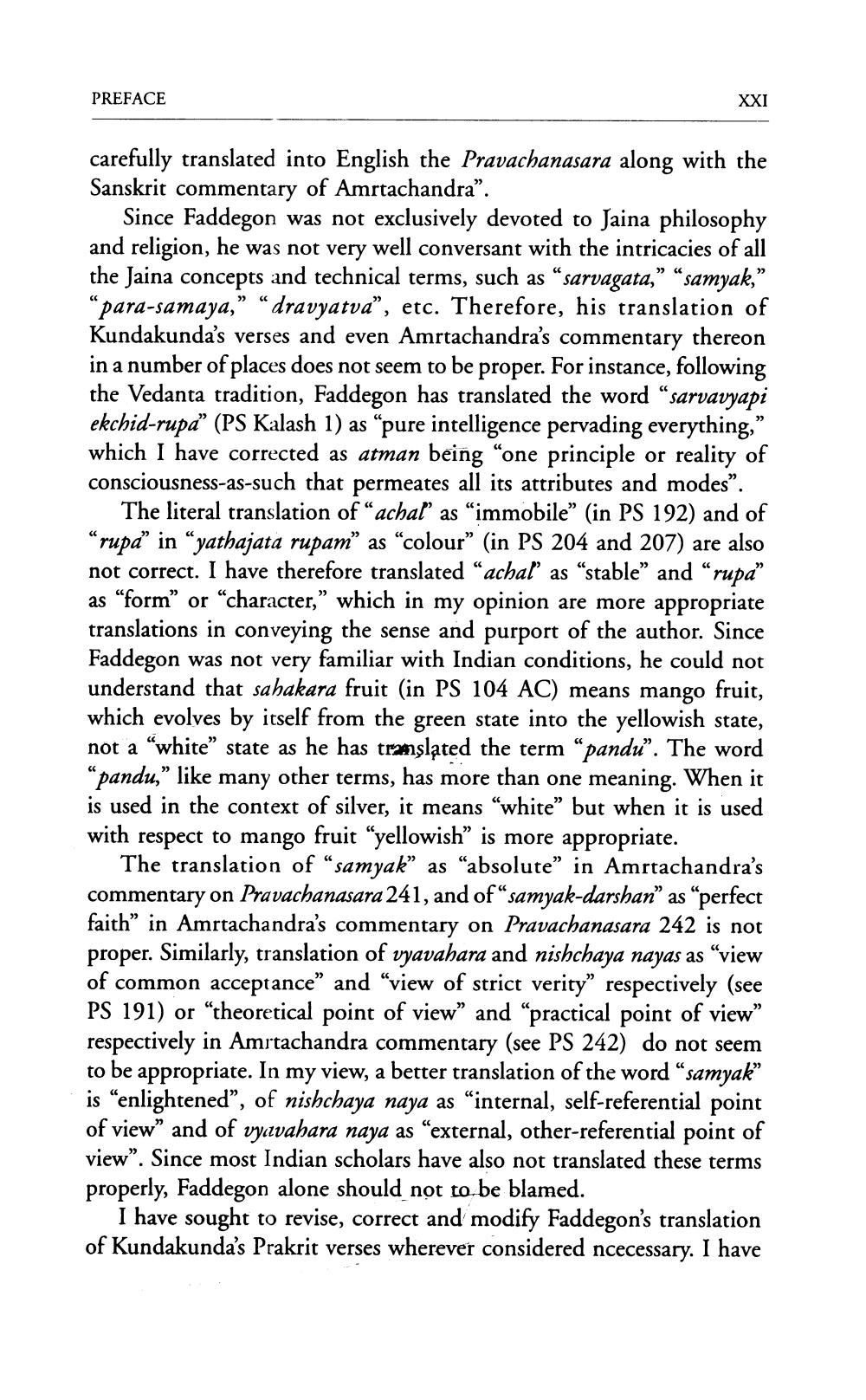________________
PREFACE
XXI
carefully translated into English the Pravachanasara along with the Sanskrit commentary of Amrtachandra”.
Since Faddegon was not exclusively devoted to Jaina philosophy and religion, he was not very well conversant with the intricacies of all the Jaina concepts and technical terms, such as “sarvagata," "samyak,” "para-samaya,” “dravyatva”, etc. Therefore, his translation of Kundakunda's verses and even Amrtachandra's commentary thereon in a number of places does not seem to be proper. For instance, following the Vedanta tradition, Faddegon has translated the word “sarvavyapi ekchid-rupa” (PS Kalash 1) as “pure intelligence pervading everything,” which I have corrected as atman being “one principle or reality of consciousness-as-such that permeates all its attributes and modes”.
The literal translation of “achaľ as “immobile” (in PS 192) and of “rupa” in “yathajata rupam” as “colour” (in PS 204 and 207) are also not correct. I have therefore translated “achaľ as “stable” and “rupa” as “form" or "character,” which in my opinion are more appropriate translations in conveying the sense and purport of the author. Since Faddegon was not very familiar with Indian conditions, he could not understand that sahakara fruit (in PS 104 AC) means mango fruit, which evolves by itself from the green state into the yellowish state, not a "white” state as he has translated the term “pandu”. The word "pandu,” like many other terms, has more than one meaning. When it is used in the context of silver, it means “white” but when it is used with respect to mango fruit "yellowish” is more appropriate.
The translation of “samyak” as "absolute” in Amrtachandra's commentary on Pravachanasara 241, and of “samyak-darshan” as “perfect faith” in Amrtachandra's commentary on Pravachanasara 242 is not proper. Similarly, translation of vyavahara and nishchaya nayas as “view of common acceptance” and “view of strict verity” respectively (see PS 191) or “theoretical point of view” and “practical point of view” respectively in Amrtachandra commentary (see PS 242) do not seem to be appropriate. In my view, a better translation of the word “samyak” is “enlightened”, of nishchaya naya as “internal, self-referential point of view” and of vyavahara naya as “external, other-referential point of view”. Since most Indian scholars have also not translated these terms properly, Faddegon alone should not to be blamed.
I have sought to revise, correct and modify Faddegon's translation of Kundakunda's Prakrit verses wherever considered ncecessary. I have




